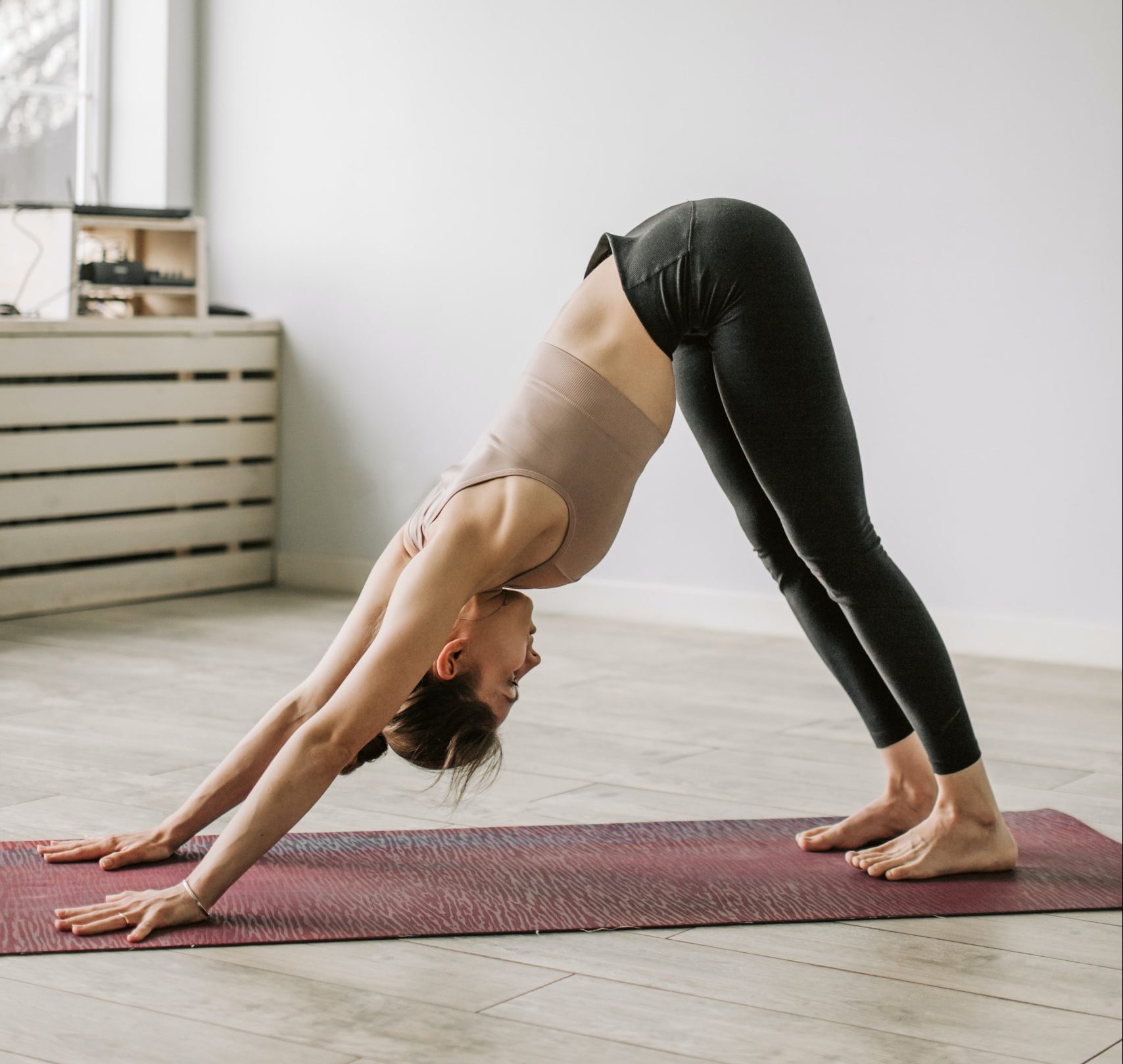Adho Mukha Svanasana, more commonly referred to as Downward-Facing Dog Pose, is a foundational yoga posture included in almost every yoga practice. The name comes from the Sanskrit words adho (“downward”), mukha (“face”), svana (“dog”), and asana (“pose”). It has been part of yoga practice for centuries and is firmly established in the Hatha yoga tradition.
The pose is an effective way to stretch and strengthen your entire body, as well as to improve flexibility, concentration, and breathing. The key muscle groups that are affected by Downward-Facing Dog pose are the calves, hamstrings, shoulders, core, arms, and back muscles. It helps to provide physical strength and mental clarity, while also stretching and relieving tension in the muscles of the upper body, lower back, and legs.
The purpose of Downward-Facing Dog Pose is to open up the back of the body and stretch the arms, legs, and spine. It is thought that this pose helps to increase the circulation of prana (life force energy) in the body and can help to rejuvenate and revitalize the body, mind, and spirit. It is also a great pose for relaxation and stress relief.
When performing Downward-Facing Dog Pose, it is important to maintain a strong foundation and focus on the alignment of your body.
In order to get into the pose, follow these steps:
1. Begin on all fours, making sure your wrists are in line with your shoulders and your knees are in line with your hips.
2. Curl your toes under and push your palms into the floor, bringing your hips toward the ceiling.
3. Take a deep breath and lift your hips up and back into the shape of an inverted V.
4. Lengthen your spine and imagine you are creating more space between each vertebra.
5. Pull your belly button in towards your spine and gently press your heels towards the ground, keeping your legs straight.
6. As you take a few more deep breaths, press your chest back towards your thighs, pushing your head down and towards the floor. Look through your legs.
7. Bring your awareness to the alignment of your body and adjust accordingly.
8. After a few breaths, gently roll your spine back down to the floor, one vertebra at a time.
Tips & Tricks
When performing Downward-Facing Dog Pose, some tips and tricks to keep in mind include focusing on your breathing, keeping your legs and arms straight, and paying attention to your alignment. You can also adjust the degree of difficulty to suit your needs by holding the pose for longer and pushing deeper into the posture with each breath. Finally, use the power of your breath to fully embody the pose and increase your awareness of the moment.
Downward-Facing Dog pose is a great pose to include in any yoga sequence, as it helps to open up the body and increase blood circulation. For example, you can start your practice in Cat-Cow pose, move into a few Sun Salutations and Warrior poses, some standing poses, and ending with a transition from Downward-Facing Dog to child’s pose (Balasana) to Corp’s Pose (Shavasana) . This is a great way to powerfully activate and stretch the entire body.
No matter what the purpose of your practice, Downward-Facing Dog pose is a wonderful and beneficial pose to include in your yoga practice. With its focus on stretching, strengthening, and breathing awareness, it is easy to understand why this pose is part of almost every yoga sequence.

